Gordon Review
Student publication at gordon college.


Ancient and Modern Liberty in Attack on Titan
The final chapter of the hit manga Attack on Titan was released this April. After peaks and valleys and long absences, the series–which I hold dear to my heart and regard as one of the foremost pieces of popular fiction of the 2010s–is coming to a bittersweet conclusion. The first half of the anime’s final season ended the last Sunday of March and the second half will not be released until winter of 2022. I therefore believe it to be the proper time to write a review of both works––one which focuses on their pre-eminent theme.
The manga and the anime, which follows it closely, follow the story of Eren Jaeger. Eren is a boy confined both by the enormous walls which surround his city and by the man-eating and eponymous Titans behind them. As the story advances, Eren learns to harness the power of the Titans, moving past the boundaries of the towering walls only to discover new ones. Beyond the prison of safety offered by Walls Sina, Maria, and Rose, Eren is faced with the sea, and beyond it, mighty and modernized nations who desire the extinction of the people of Eren’s island—Eldians—as atonement for past grievances. Though the manga’s author, Hajime Isayama, has interwoven a variety of profound topics into his work–meditations on violence, suffering, the moment of death, how far the oppressed ought to go in combating their oppressors, and even the existentialist refrain of the protagonist: “Because I was born into this world”–the predominant theme can be summed up in a single word: freedom. This is the first theme touched on in the entire manga and it will be the last word penned onto the final page. It is the eternal fixation of the main character, who proffers it as his motivation at both his highest and darkest moments. But a motivation so simple is open to interpretation: what does “freedom” mean?
Benjamin Constant also tangled with this question in his essay “ The Liberty of Ancients Compared with that of Moderns .” Addressing the Royal Athenaeum of Paris in 1819, he was much more concerned with liberalizing the newly restored French monarchy than he was with Attack on Titan’s carnivorous giants and genocidal foreign coalitions. Nevertheless, his exposition on the differences between Ancient and Modern Liberties will help us categorize Eren’s oft-referenced freedom. Though he is speaking in the 19th century, Constant’s description of modern liberty sounds familiar to 21st century ears: he lists freedom of speech, religion, association, and movement, and even the freedom “to occupy [one’s] days or hours in a way which is most compatible with their inclinations or whims.” Finally, and almost as an afterthought, he tacks on the right to exercise “some influence on the administration of government,” although he seems not to care whether this takes the form of actual elections or mere petitions to a (hopefully) sympathetic magistrate.
“The Liberty of the Ancients” is almost exactly the opposite. Whereas participation in civil government is all but negotiable for moderns, ultimately serving little end other than to safeguard liberal rights, the ancient man was all too willing to sacrifice personal freedom for the right to participate in public life. The ancient’s duties are many, “deliberating… over war and peace…forming alliances with foreign governments… voting [for] laws… pronouncing judgments… examining the accounts, the acts, the stewardship of the magistrates,” but their rights are few. Freedom of speech was unthinkable, freedom of religion blasphemous. Constant even notes how one Therpandrus of Sparta “could not add a string to his lyre without causing offense” to the theocratic religious leaders of his polis. The individual was, at least according to Constant, a sovereign in public matters, a slave in private matters. He was “lost in the nation, the citizen, in the city.”
The historicity of Constant’s description aside, his paradigm provides an excellent framework to analyze Eren’s own conception of freedom. Is Eren Jaeger a modern? An ancient? A Liberal? Or a Spartan? Though the hard choices and even atrocities the character commits in the name of his ideals might bias the scales in favor of the latter option, he must ultimately be evaluated by his own arguments. In the first chapter of Attack on Titan, Eren pointedly asks a soldier assuring him of the walls’ safety: “Isn’t that like being a caged animal?” The omniscient narrator, clearly sympathetic to Eren’s point of view, repeatedly refers to the walled settlements as birdcages, and (mixing his metaphors) to the people who lounge peacefully inside them as cattle. Clearly, Eren hates to be stifled; a boy who cannot bear to remain within walls built to defend him could scarcely comprehend a polity which would prevent him from adding an errant string to his lyre. This more liberal conception of freedom remains his motivation through most of the first three seasons: freedom to go beyond the walls he was born in and to see, or rather, to help his friend Armin see, the great ocean which the two boys had only read about in books. The ocean itself symbolizes this negative liberty: its vast openness contrasts with the suffocating heights of the walls, its beauty demanding freedom to enjoy beauty.
By the time Eren dips his feet in that saltwater at the end of season three, he cannot enjoy it, shackled as he is with new chains of his own making. Eren now feels only the weight of duty and fate: having seen a vision of himself leading an army of Titans to crush all the nations that wish to wipe out his own, he concludes that it must be necessary. He accepts this destiny as a deviant from the enthusiasm wherewith he had previously revolted against the walls and Titans which had taken away his choice. To this new bondage of his will, he gives a name: freedom. Now, whenever Eren uses this word, he means national freedom–the freedom of his country Eldia from its historic rival Marley and an uneasy coalition of allies united only in genocidal hatred of his homeland. “My goal,” he explains in chapter 123, “is to protect the people of [this island], who bore me and raised me.” To this end, he takes up a deeply ascetic lifestyle, even temporarily blinding and maiming himself to infiltrate the enemy nations and probe out their weaknesses. Gone is the cheerful boy of early chapters and seasons. What remains is a singular purpose wearing the clothes of a man. Earlier in the story, a dying criminal and hedonist had noted that “Everyone is a slave to something.” By the end of the story, Eren Jaeger has become a slave to freedom.
Is Eren’s national freedom the same as the Ancient Liberty as described by Constant? There are certainly some similarities. For example, Eren’s notion of freedom seems only to concern the nation, the race, the state–having little regard for the individual. This is to be expected; on the civilizational level hierarchy of needs, existence must precede freedom. No member of an extinct people can be free; the dead have no liberty. One might argue, however, that neither does Eren submit himself personally to the state; he declares a personal war against Marley in violation of his government’s wishes. Although he accepts court martial and imprisonment for this insubordination, he knows no prison can hold him. Finally, he overthrows the government of his own country–not once, but twice. This might seem more radically libertarian, even anarchist, but Eren makes no rights-based claims to justify his actions. He, like the Constant’s ancients, has “no notion of individual rights.” Whatever ideas he might have had about personal freedom as a child, by the time of that pivotal scene at the sea, his concept of freedom has been baptized in the oceanic waters. Dying to individualistic and modern liberty, he has been born again as a warrior for his people’s Ancient Liberty.
Or perhaps not. In chapter 108, Eren, speaking to his friends, informs them that he will not allow any of them to inherit his Titan powers after their inbuilt thirteen-year lifespan ends his life. He does this despite knowing that it will potentially prevent them from completing his life’s mission, “because you’re important to me. More than anything.” Although the later seasons switch to political drama and deep philosophical themes, the first season was a simple shounen: a classic story of a boy and his friends combatting insurmountable odds. The friendships forged in that crucible of anti-Titan warfare becomes the motivation for the main character even as the main enemies he faces shift from Titans to human nations. It is ultimately the desire to protect that cohort, and not his nation, that drives him. In every iteration of freedom that he cares about, whether it be the freedom to live outside the walls or the freedom to survive, Eren has primarily cared for not just himself and not for his whole country, but for his comrades, his brothers in arms. That is why Eren can ally with foreign volunteers to overthrow his own nation’s government, and why he gives up every vestige of personal liberty in his great crusade for freedom. It is his friends’ freedom he cares about; his person and even his nation are mere means to secure that end. For this reason, Eren’s conception of freedom is neither Ancient nor Modern. It is Postmodern: he did not embrace a non-individualistic view of freedom out of ignorance of individualistic ideals, but because–having been originally acquainted with them–he had outgrown them. He weighed modern liberty in the balance and found it wanting. But having tasted the freedom of choice, he can never go back to unchosen associations and duties. His friends are, to borrow the phrase from another character, “the comrades in whom [he] has placed his trust,” and not those whom he is, like the ancient citizen, obliged to serve by dint of birth. Eren has created a non-individualistic hierarchy of values from out of the more individualistic society he was born into, and to the perpetuation of this cadre, he has given the name of Freedom. And, having done so, so he imposes a duty upon himself: to save his group of friends, even if it means becoming a monster.
The opinions expressed in this publication are those of the authors. They do not proport to reflect the opinions or views of the Gordon Review, editorial staff, or its members.
Categories: Arts
Subscribe to the Gordon Review
Enter your email address to follow and receive notifications of new posts by email.
Email Address
Trending Posts
Doomer Thoughts
Ideas, essays, poems… we've got it all.
Freedom – An Attack on Titan Essay
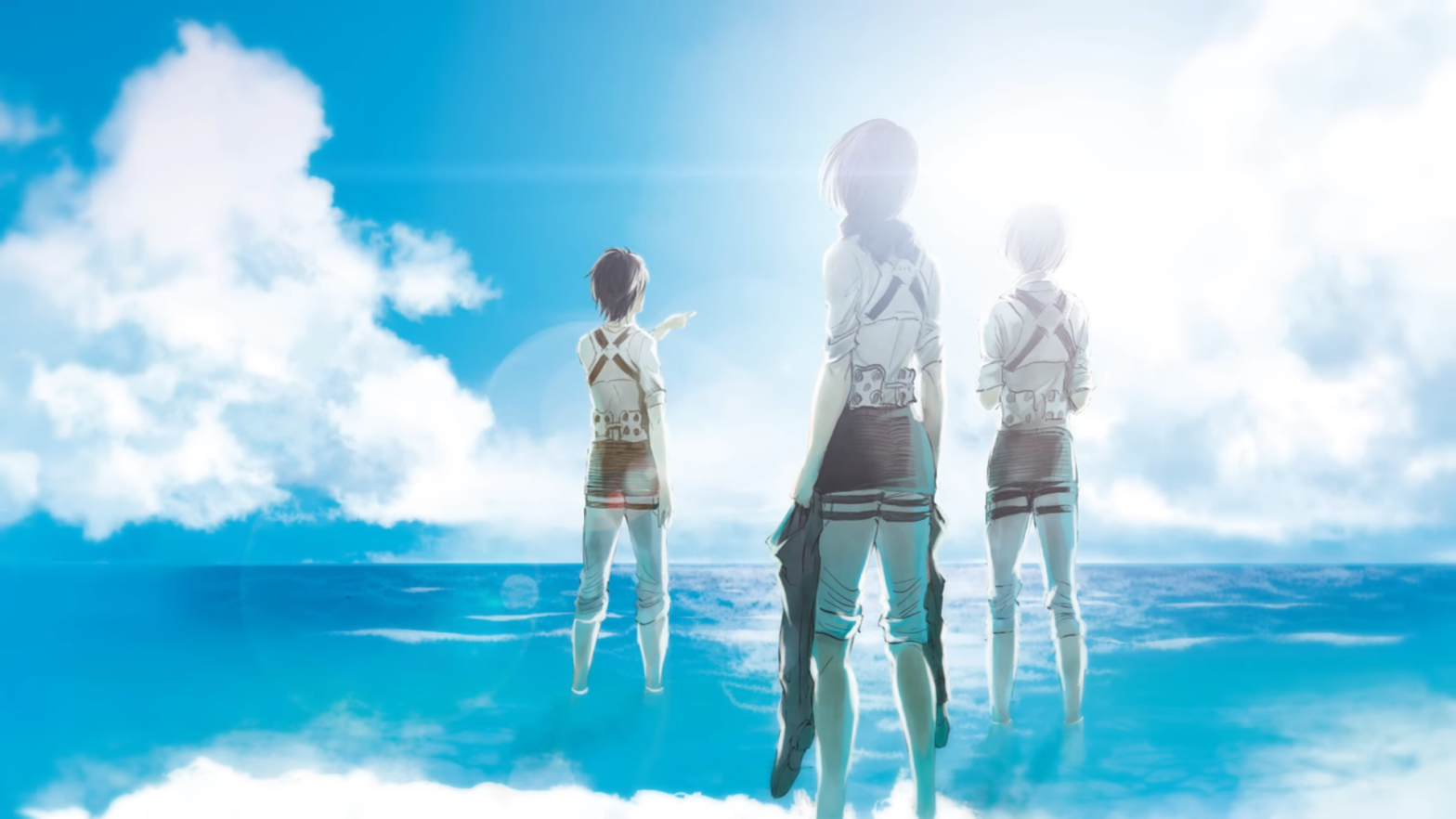
WARNING : Contains major spoilers for seasons 1,2 and 3 of Attack on Titan
Freedom. What does it truly mean to be free? In 2013 the critically acclaimed anime Attack on Titan released and took the world by storm. It was a global phenomenon, not just among casual anime watchers but even those who did not watch anime were either watching it or have heard of it. The first season of Attack on Titan introduced a very simple premise; titans, man eating beasts roamed the world while the remaining humans were caged up inside a structure of walls of which there were divided into 3 layers, protecting them from the titans.
Titans had no way of getting inside as the people on the inside were contempt with their way of life, but all this changed when the colossal titan attacked, a titan so humungous in scale that its head was visible just slightly above the walls. The colossal together with the armoured titan which as the name implies, was a titan covered in plates of armour, broke through the gates of the outermost later of the walls. This singular event set into motion what would wind up being one of the greatest fictional pieces of media to ever exist. The premise of humans equipped with gear to combat the titans in and of itself wasn’t exactly particularly unique and was met with some criticism from people who thought it was “overrated”. However an astounding percentage of people were ecstatic with the show as it was a non-stop hype train with balls to the walls action sequences. All of this was brilliantly animated and accompanied with one of the greatest musical scores of modern times, composed by the masterful Hiroyuki Sawano.
The show was filled to the brim with twists and turns and is an enjoyable watch, especially for angsty teens who enjoyed a bit of violence which Attack on Titan offers in spades. The show had a dazzling start and ended on a thrilling note in which it was revealed that there were humans who were capable of transforming into titans, the main character Eren Jeager being one of them who was unaware of his abilities and the other; being a character named Annie who unlike Eren was well aware, and was in fact siding with the titans to annihilate the remains of humanity within the walls. Now all this said and done, it wasn’t all of what people praised it to be. It did have some flaws especially in terms of pacing throughout the later parts on the season, and although it was good; “the greatest anime ever” was somewhat pushing it. Yet people were hyped up and could not wait for the next season, and then… nothing.
For 4 years fans were left hanging until season 2 started airing, by the time which most people had already moved on to other shows. This seemingly spelt the end for the series, but it was quite the contrast. Despite the massive drop in viewership numbers, season 2 improved on many of the flaws from the first season and expanded upon the hidden lore of Attack on Titan’s world. There were less fight scenes which might have put off those who watched it for the hype, but the atmosphere of the show had somewhat shifted. It was more story driven, catering to a more mature audience. It also gave us the pleasure of witnessing what might have been the most stinging betrayal in all of anime as 2 people from the main cast were revealed to be the armoured and colossal titan.
Eventually when season 3 rolled out in 2018, this is what truly divided the Attack on Titan fans as the show completely shifted gears, now concentrating entirely on its worldbuilding, cast and stellar narrative. Adrenaline pumping action based scenes were reduced to a minimum as the scenes became far more dialogue heavy and centred more around the plot. That was not to say that the action scenes were bad, as the animation quality had not only met expectations but far surpassed the animation from the previous seasons.
All of this, the past 7 years had built up steadily to season 3 part 2. Numerous questions and mysteries from the previous seasons were finally revealed, and in a spectacular manner at that. The answers from these questions completely and utterly change what the characters as well as the audience thought was the truth up till this point. The titans were not the enemy but their own kind being forced to transform into titans against their will and roam the earth for all of eternity until they are slayed. The true enemies were in fact the rest of the world, who lived in fear of those within the walls as their ancestors once used their powers to rule the world. But even they cannot be classified as villains, as from things look different from their perspective. Just the absolute magnitude and scope of the situation in hand was completely elevated to an entirely different plane. The duality of good and evil is non-existent in this show, everything is morally grey and depends on perspective. This is why in my mind, Attack on Titan stands proud at the pinnacle of fictional storytelling. Clearly, I’m not the only one who thinks so as Attack on Titan makes up many of the places on the “top episodes of all time” list published by IMDb; with the episode “Hero” being a standout in particular as it holds the title of the highest rated episode of all time with a perfect score of 10. Re-watching scenes from the previous seasons now open up an entirely new perspective to the story, as the signs were laid there all along but are not noticeable during the first watch.
Throughout the entire running of the series, there is one theme which has always remained consistent; freedom. Almost all the characters have certain attributes which tie into freedom, Erwin Smith the commander being a good example. He had always wished for freedom in the sense of the truth. He valued truth more than his own life, and that’s what ended up costing him eventually. Despite all this, nowhere else is the theme freedom more well fleshed out and displayed than through the protagonist, Eren Jeager. As a kid Eren longed for freedom to explore the world outside the walls, during the majority of the series he preaches about freedom from the impending doom of the titans by declaring that he would kill every last one of them so that they would finally be free. Yet, one of the most chilling scenes in the entire show is the ending of season 3 part 2. After the remaining cast members finally get to witness the ocean for the first time, a monumental moment which most of them were celebrating. All but one, Eren stood there in silence, solemnly looking far into the sea. While everyone else was busy looking at the ocean, his attention was elsewhere; not looking at the ocean, but far beyond it, past the horizon. He had always thought that outside the walls was the ocean, and past the ocean lies freedom, but he was wrong. Past the sea there were only hoards of enemies, who loathed them and wished for their demise. He points towards the horizon… “If we kill every last one of our enemies out there, will we finally be free then?” On a surface level this hits hard, but there is much more to what he says then meets the eye. The series manages to not just give a simple answer as to what freedom is, but instead poses the question to the audience instead, making the viewer think. It is a very mature way to approach the question, as there truly is no right answer. What is freedom? And what is the cost of freedom? We will never be able to find out, unless we keep marching forward.
Share this:
Leave a comment cancel reply.

- Already have a WordPress.com account? Log in now.
- Subscribe Subscribed
- Copy shortlink
- Report this content
- View post in Reader
- Manage subscriptions
- Collapse this bar
Literature, Cinema, Philosophy, and Essay
Attack on Titan: Paradox of Fate and Freedom
In November 2023, the globally acclaimed anime series Attack on Titan concluded, marking a significant milestone in its narrative. The conclusion of this iconic series, akin to many others in its genre, elicited a diverse range of reactions from its audience. Some enthusiasts lauded it as a fitting and precise climax, appreciating the resolution provided to the narrative arc. Conversely, another faction of viewers deemed the ending rushed and marred by assumed shortcomings in the quality of the writing. These contrasting opinions highlight the subjective nature of artistic reception as fans grapple with different perspectives on the narrative’s resolution.
For those unfamiliar with its storyline, Attack on Titan is a manga series, a form of Japanese comic, meticulously crafted by the skilled writer and illustrator Hajime Isayama. The intricate tale revolves around the protagonist, Eren Yeager, a human inhabitant of a world sheltered within colossal walls built to protect humanity from formidable humanoid creatures known as Titans. Eren’s primary goal is propelled by an unwavering oath to cleanse the world of Titans, a commitment forged in the crucible of personal tragedy—his mother’s untimely death at the hands of a Titan during his formative years.
As the narrative unfolds, Eren embarks on a transformative journey, enlisting in the military alongside comrades and friends. Together, they earnestly strive to repel the ceaseless Titan attacks breaching the sturdy walls safeguarding humanity. The crux of their collective efforts extends beyond mere survival, delving into a genuine quest to uncover the actual hidden truths behind the mysterious masks of these giant adversaries. Throughout the series, personal vendettas, friendships, and the pursuit of revelations propel characters, especially Eren, into the realms of uncertainty and danger, forming the gripping narrative core of Attack on Titan .
The primary mystery enveloping the show’s narrative focuses on the Titans. Within this formidable class of creatures, nine individuals possess unique abilities to transform between human and titan forms, attaining unparalleled intelligence among their titan counterparts. Notably, Eren Yeager emerges as a critical figure in this group, endowed with the unique ability to transform into a Titan known as the “Attack Titan.”
Layers of Ignorance
During the early phases of the narrative, the intricacies of the fictional world of Attack on Titan were shrouded in mystery, making it challenging for readers to comprehend. Only well beyond the midpoint of the storyline did revelations about the origin of the menacing threat surrounding the walled city emerge: the inhabitants of this city, located on an island named Paradis, traced their lineage back to the Eldians, a prominent bloodline. This particular clan, known as Eldia, after centuries of dominion, chose to abdicate or surrender (depending on the narrative version) and seek refuge on Paradis. As a result, they allowed the Marleyans, a population they had previously conquered, to retain control. Crucial details emerged that the royal family of the Eldians, holding the Founding Titan—a titan granting absolute authority over individuals with Eldian lineage through mystical connections—used this extraordinary power to conceal this information from fellow Eldians for nearly a century when the chronicle began.
Following the discovery of Grisha Yeager’s diary, a revelation unfolded, exposing a perplexing reality within the Marleyan Empire. The excavation of these stories underscored the emergence of conditions resembling pre-Holocaust on the remaining Eldian population. Forced to reside in ghettos and subjected to ceaseless racial oppression, the Eldians found themselves trapped in a grim fate, compounded by the threat of transformation into Titans—a punitive act systematically carried out by the Marleyans.
This grim destiny unfolded as the Marleyans, in their Machiavellian endeavors, manipulated the transformative power of the Titans as a potent tool for conquest. The unsuspecting Eldians, with their collective memories erased by the royal family, remained unaware of the machinations of their oppressors. Meanwhile, on the continent of Paradis, the source of Titan attacks was revealed—a horrifying revelation exposing Eldian prisoners forcibly transformed into mindless Titans by Marleyan authorities. This peculiar transformation served as a psychological weapon against the Eldians in Paradis, retaliating for perceived atrocities committed by their society.
Ironically, a profound irony envelops this conflict as the Eldians in Paradis remain unaware of the plots orchestrated against them, thanks to selective memory erasure by the royal family. Simultaneously, the Marleyans remain oblivious to the indifference of the Elders, resulting in layers of ignorance and manipulation that further complicate the already intricate web of power and control.
Forced Indoctrination
The narrative depicts the people of Marley in a very villainous light in their treatment of Eldian refugees. A profoundly poignant illustration of this cruelty can be witnessed in the tragic death of Grisha’s younger sister, Faye, at the hands of a Marleyan military officer during his childhood. Eldian residents, including Faye, systematically became targets of forced indoctrination, compelling them to adopt a belief system that categorizes them as inherently monstrous, forcing them to dedicate their lives exclusively to serving the interests of their adoptive country, Marley.
The intensity of this indoctrination is evident in its ability to force even a young individual like Zeke Yeager to betray his parents and actively participate in planning the annihilation of his people. The prevailing prejudiced environment is further explained in the subsequent Marleyan plot, providing a comprehensive exploration of the intricate and systematic indoctrination unveiled by Marley’s “Warriors.” This indoctrination has strategic goals to meet the military requirements of Marley, emphasizing the systemic and embedded nature of various prejudices within the narrative.
The significance of these entities, commonly called “Titan Shifters,” becomes crucial in the overall storyline, serving as catalysts and significant influencers in the narrative. Their role goes beyond physical strength and encompasses strategic and pivotal impacts on unfolding events. An illustrative example of this influence is evident in the actions of the Colossal Titan, which, by breaching the initial defensive walls, triggers the entry of Titans into Eren’s hometown of Shiganshina, resulting in a tragic massacre of its inhabitants. This incident highlights the crucial role of Titan Shifters in directing the course of events in the storyline.
Subjects of Ymir
Furthermore, a revelation unfolds, explaining the origin of Titans as former human entities undergoing a complex transformation through the administration of chemical serum. This unique population, identified as “Subjects of Ymir,” instills widespread fear due to their inherent ability to metamorphose into giants. As a result, these individuals become targets of societal scorn, their value reduced to the strategic advantages they offer in conflicts, mainly exploited by the Marleyan nation during warfare.
Subjects of Ymir were relocated to designated internment zones, with the most extensive zone being the island of Paradis, commonly known as the Wall or Eldia. The narrative then takes a different direction, delving into previously undisclosed dimensions that have been carefully developed. In a series of painful and pivotal events, the former protagonist, Eren, assumes the role of the main antagonist. Motivated by a strong desire to protect his homeland, Eldia, he decides to commit an unprecedented genocide on an unparalleled scale, deploying colossal titans to eradicate every human inhabiting the planet.
The plot unfolds in a climactic confrontation, where former allies and enemies unite collectively to thwart his sinister intentions. Only through the combined efforts of these different factions does Eren meet his resounding defeat, marking a conclusion characterized by the intricate interplay of complex relationships and a solid determination to preserve humanity from the brink of destruction.
The contested narrative has a strong structure and storyline. However, controversies surrounding it have given rise to related questions. In particular, the story’s conclusion has sparked dissatisfaction from various perspectives. Some argue that the ending resembles Code Geass , claiming a lack of originality. Simultaneously, comparisons are made to Game of Thrones , a series known for its widely criticized conclusion. The crux of the issue lies in the consensus that it is ending, when compared to the earlier elements of the anime, can be considered somewhat ordinary. Sentiments like these are prevalent among those who have engaged with the material.
Numerous valid criticisms have been raised regarding the intricate narrative of this series. A prominent example is the portrayal of Ymir, the prime Titan Shifter, whose presence aids Eren in executing his intricate plans. Despite the suffering endured over centuries, the continuous bestowal of transformative Titan powers to Ymir’s people emerges as a perplexing aspect of the storyline. Her enigmatic determination is linked to her romantic entanglement with her harsh partner, compelling her to obediently follow his directives to perpetuate the spread of Titan’s abilities.
Furthermore, significant criticism arises following Eren’s drastic genocide plan. Instead of averting threats to Paradis, the impact of his actions only serves to postpone hostilities temporarily. This temporary hiatus prompts Eldia to adopt a militaristic ideology and, arguably, a fascist ideology as a mechanism of defense against anticipated retaliation. Questions arise about how Eren, a proponent of such a controversial strategy, seems to be exempt from accountability by his peers.
A crucial paradox emerges from the narrative’s conclusion where, in the eleventh hour, Eren transforms into a heroic figure once again. This sudden transformation prompts contemplation on the fundamental motivations and internal dynamics that facilitate the collective forgiveness extended to him for his earlier genocidal aspirations.
Upon reflection, alternative courses of action that make sense emerge, prompting questions about the necessity of Eren’s drastic measures. The almighty Founding Titan can nullify the Titan powers inherent in the Subjects of Ymir, thereby eliminating the need for genocide as a preservation method. This reflection prompts inquiries into why a more pacifist resolution is omitted.
Lastly, peculiarity arises in the thematic discourse surrounding freedom. Despite Eren’s steadfast declarations in the fight for freedom, his predetermined actions culminate in the paradoxical implementation of genocide as an inevitable fate. The discord between acknowledged ideals and manifested actions becomes a sharp critique, inviting deeper exploration into the complexity of character development and narrative coherence within the broader context of the storyline.
Indeed, certain forms of media exhibit a maturity comparable to the refinement of quality wine. For example, Spiderman 3 with a particular emphasis on the infamous dance scenes. Upon its initial release, audience reactions could have been more satisfactory, and understanding such sentiments is not unwarranted. The scenes, marked by awkwardness, elicited discomfort and an overall sense of oddity among viewers. However, in retrospect, one can discern the intentional meaning behind this discomfort. At that point in the film, Peter Parker wears the Venom Symbiote, a transformative entity that fundamentally alters his entire personality. Though seemingly unrealistic and unsettling, the exaggerated display of confidence serves a purpose—it highlights Peter’s vulnerability to corruption. The discomfort experienced by the audience reflects the character’s descent into moral ambiguity. It is an intentional exploration of the vulnerability of even beloved heroes like Peter Parker, ultimately leading to his acknowledgment of this corruption and subsequent rejection of the symbiote.
Isayama’s Narrative Precision
Two observations can be made from this specific situation. First, fundamental implications become clear upon subsequent reflection, especially when revisiting the film. Despite the temporary investment required, it becomes evident that a more nuanced appreciation of the narrative will manifest after comprehensively internalizing the entire sequence of events, possibly requiring a reevaluation on one or more occasions. Second, it becomes apparent that these events were premeditated and deliberately incorporated from the outset of this endeavor. Notably, both principles can seamlessly be extrapolated into the context of Attack on Titan .
Naturally, Isayama cannot be regarded as an extraordinary scholar who meticulously orchestrated his narrative with intricate precision from the outset. Such endeavors surpass the abilities of even the most formidable writers. Nevertheless, it is crucial to acknowledge that the foundational elements of the storyline and plot, in general, were definitively established in the early months of the manga’s production. After a thorough reassessment of the entire manga, a discernible pattern emerges.
Despite possessing incredible abilities inherent to the Attack Titan, Eren Yeager consistently takes on the role of an outsider within the ranks of the Survey Corps. His position among his peers is marked by widespread alienation, a consequence of the pervasive distrust directed towards him by the government he serves. Paradoxically, despite being blessed with extraordinary power, Eren is often manipulated as a mere pawn in the intrigues of his enemies.
Moral Complexity
His inclination toward impulsive actions and outbursts of anger complicates his personality further. As a character, Eren occupies a nuanced space where he elicits sympathy as a victim of circumstances while emerging as an unapologetic antagonist. This duality is accentuated in the final chapters, where he becomes the primary catalyst for a series of heinous actions, culminating in a horrific endeavor commonly referred to as “The Rumbling.”
In a shocking turn of events, Eren’s journey leads him to commit a series of atrocities that, upon closer examination, reveal terrifying motives—a genuine attempt to orchestrate genocidal efforts against the entire global population. This radical shift in character development renders Eren a morally complex and ambiguous figure, blurring the lines between protagonist and antagonist in the narrative landscape.
Eren’s actions do not seem without reason, as he witnesses the deep-seated cultural hatred harbored by Marleyan society towards Eldians. This sentiment extends even to the Marleyan Titans themselves. Confronted with an imminent genocidal threat looming over his people, as Marley initiates a massive assault on Paradis, Eren makes a morally reprehensible choice by leveraging the power of his Founding Titan, obtained through his father’s consumption of the former Founding Titan, to unleash the colossal Titan forces within the massive walls of the city of Paradis. This devastating act is intended to wipe out the entire human race. Although Eren’s sudden shift in allegiance may surprise fans, the historical parallels with World War II in the narrative suggest intentional analogies by Isayama, aiming to convey profound lessons.
The protracted conflict between the Eldians and Marleyans has endured for a long time, resulting in ambiguity regarding the truth of both factions. The intricacies of determining who is right or justified in their actions still need to be discovered by both parties. In this prolonged dispute, both Eldians and Marleyans play the role of aggressors, a fact underscored by Eren’s direct involvement in the terrorist attack on Liberio—a pocket Eldian district. This act of violence occurs after Marley’s official declaration of war, a decision contrary to the wishes of Eren’s comrades.
Exhibit Compassionate Heroism
Despite Eren’s extraordinary ability to cause widespread death and destruction, Hajime Isayama earnestly endeavors to depict Eren’s perspective. In doing so, Isayama emphasizes that, from Eren’s point of view, his actions are a response to the ceaseless and blatant hostility in the world. This portrayal underscores the idea that Eren perceives his existence as marked by constant isolation, which leads to profound emotional alienation. In this context of isolation, Eren’s path towards wrongdoing can be traced, revealing the complex interplay of factors that culminate in Eren’s descent into a morally ambiguous role.
Eren’s reluctance to exhibit compassionate heroism is a poignant illustration of his profound fear of embodying “the other”—an individual in constant conflict with his environment, a target of oppression by authority figures above him, and estranged from his peers, who consistently see him as an irresponsible outsider. The transformation into this monstrous figure manifests the psychological consequences of this deep-seated fear.
In a critical examination of traditional Shonen narratives, where a close-knit group of heroes forms a surrogate family, Eren’s ultimate decision to sever ties with his comrades in the Survey Corps serves a specific purpose. This intentional disregard functions as a commentary on the genre, indicating that Eren, having witnessed humanity’s rejection, including those within the Corps, responds by rejecting their shared moral values. This significant departure from the typical Shonen metaphor emphasizes Eren’s sharp deviation from conventional heroic narratives and underscores the profound impact of society’s alienation on his character development.
Pervasive Fear of Social Isolation
Concerns about experiencing social isolation and rejection extend beyond Eren; this pervasive fear resonates consistently throughout the narrative. Its echoes materialize in various characters, such as Mikasa grappling with deep sorrow stemming from Eren’s rejection of her, Reiner tirelessly striving to redeem Eldian heritage as a Warrior reflecting this profound anxiety, and Zeke, whose betrayal of his parents further exemplifies the widespread themes of fear and isolation. In summary, Attack on Titan argues that fanaticism brings about specific consequences: it orchestrates the systematic removal of a significant number of politically undesirable elements or gives rise to a society inhabited by individuals who are fractured and forced to sacrifice their most cherished values solely to secure a sense of belonging. This profound commentary remains relevant in the contemporary world where fanaticism and prejudice persist. The resilience of this message underscores the narrative’s potential, and it is a testament to Isayama’s skill as a writer. All the intricate twists in Attack on Titan seamlessly coalesce when viewed through this thematic lens.
The narrative depicted in Attack on Titan does not revolve around the theme of freedom; instead, it intricately unfolds as a deep exploration of fatalism and the inevitable direction of fate. Within its narrative framework, the overarching storyline delves into the intricacies of destiny, emphasizing the unyielding and predetermined nature of events. As a result, Attack on Titan emerges as a sharp portrayal of the role of fatalism, offering a different perspective on the inevitability inherent in the fate of characters and the overall narrative structure.
Upon closer examination, a striking paradox emerges in the narrative, seemingly revolving around the theme of liberation. The Scouts actively struggle for autonomy; likewise, the Warriors, embodying Marley’s Titan Shifter army, earnestly pursue freedom and security for their loved ones. However, a different analysis reveals the pervasive nature of fatalism within the storyline.
The Inevitability of Fate
From the outset, the Survey Corps is firmly informed about the possibility of the fate awaiting them—a destiny seemingly destined to culminate in their transformation into Titan livestock. Though unavoidable, the presence of the Titans becomes an unquestionable certainty, a constant and unyielding force in the narrative landscape. The ceaseless existence of these Titans, a ubiquitous threat, instills deep fear and dread in the characters and, more profoundly, in the audience. The coexistence of the aspiration for freedom and the specter of inevitable fatalism is tightly intertwined, casting a shadow over a narrative seemingly liberating, revealing the profound complexity underlying the characters’ relentless struggle for autonomy.
The people of Paradis are compelled to endure and continually raise their expectations to alleviate these widespread concerns. Their yearning for freedom remains unfulfilled, compelling them to seek alternative actions. As explained by Kenny Ackerman, “Each individual finds solace in some form of poison to sustain their endless pursuit… Every soul is bound by slavery to some power.” The confined inhabitants within the Walls persist, tirelessly fighting for a glimmer of hope that is challenging to grasp.
The realization of these hopes is manifested through the personality of Eren Yeager, the carrier of the Attack Titan, symbolizing the aspirations of Eldia. However, an inevitable fate has predetermined the semblance of this rightful choice. Eren reveals that he utilized the inherent ability of his Attack Titan, known as Future Memory Inheritance, to manipulate his father into inheriting the Attack Titan and the Founding Titan. Thus, from the outset of the narrative, the course of events has been predetermined and etched in unwavering certainty. Eren is destined to inherit the Attack Titan, and fate dictates the inevitable course of his descendants to carry out genocide.
Examining this issue from an alternative perspective, particularly from a Nordic standpoint, reveals an intriguing relationship between Attack on Titan and Norse Mythos. Incorporating names such as Ymir and the Titans correlates with the Giants in Norse mythology, underscoring a tangible influence. However, delving deeper into this analysis unveils various mythological dimensions embedded in Attack on Titan .
Norse Mythology
Norse mythology, renowned for its emphasis on the concept of fate, bears striking similarities to the intricacies of the Attack on Titan narrative. Odin, in particular, continually strives to evade his predetermined fate, reflecting the characters’ struggles in the series. Furthermore, the omnipresent threat of Ragnarok, the apocalyptic battle destined to culminate in the destruction of all creation, aligns with the climactic events in the storyline. A careful examination reveals that the final chapters of Attack on Titan encapsulate elements reminiscent of an apocalyptic battle, further aligning with the thematic foundation of Norse Mythology.
Various individuals forming the ensemble cast of characters in Attack on Titan are metaphorical analogies of different Norse gods. In explaining this conceptualization, Erwin Smith, the former commander of the Survey Corps whose tenure ends abruptly, is analogized with Tyr, the god synonymous with justice and distinguished by his single hand—a trait shared by himself. In parallel, Levi Ackerman is likened to Thor, renowned for his feats in conquering giants and protecting humanity. Specifically, Hanji, also known as Hange, plays the role of Odin, the one-eyed god symbolizing war and wisdom. This intricate parallelism prompts contemplation on the characterization of Eren, inviting an investigation into his fellow Norse god counterparts.
Surtr, renowned as the Harbinger of Ragnarok, is destined to traverse the celestial path of Bifrost, where he will launch a decisive assault and lay claim to the Midgard territory. Undeterred by the exquisite beauty surrounding Bifrost, his sole focus remains fixed on the adversaries ahead. This resolute determination reminds us of another character, Eren, who disregards the allure of the ocean, embarking on a journey across it with indifference to its aesthetic appeal. Eren contemplates that true freedom will only be achieved after the death of every individual in Marley. Simultaneously, Surtr, eagerly awaiting the revelation of his predetermined fate, is driven by an unshakable thirst for vengeance that has consumed his entire existence.
Conscious Choice
The fate of Eren, akin to an unavoidable decision, is closely tied to the spread of chaos and destruction. This determination is explicitly elucidated through the prism of his future memories, serving as an eternal signpost of the preordained path. As a resolute response to these preordained revelations, Eren, trapped in the labyrinth of his uncertainty, consciously chooses the path leading to an ongoing natural disaster.
The mystery resides in Eren’s deep confusion, a complex maze of conflicting emotions and turmoil that compels him to assume the role of a puppet in the face of destiny. His depiction as an enslaved person to an inescapable fate symbolizes the universal condition of humanity, where individuals continually wrestle with the eternal struggle for a glimmer of hope amid the unending tumult of existence.
As an allegorical representation of our collective humanity, Eren symbolizes humanity’s unending quest for optimism. The essence of his choice lies in pursuing a destiny that promises a better future. The moral foundation of this narrative is unveiled as a profound revelation: the concept of freedom, seemingly considered a force of liberation, becomes a mirage that leads to slavery when earnestly pursued. The relentless pursuit of freedom transforms into a Faustian bargain, where individuals unwittingly become bound to an unavoidable destiny that casts a shadow over human existence.
Bibliography
- Ahmad, S. (2022). Attack On Titan: The 16 Characters That Changed The Most Throughout The Anime . Game Rant.
- Ahmed, S. R. (2021). Attack on Titan: One of the greatest stories ever told . The Business Standard.
- Lobo, J. G. (2014). Critical Analysis: Attack on Titan . Who Cares About Anime.
- McWilliams, C. (2022). Attack On Titan: How the Opening Music Captures the Anime’s Core Themes . CBR.
- Zimmerman, D. (2021). Attack On Titan: 10 Ways Eren Is Anime’s Most Realistic Character . CBR.
Share this:
By salman al farisi, related post, the deceptive beauty of call me by your name, the matrix: reimagining reality of plato’s cave in pixels, the naked island: how shindo bridged eras through silent films, leave a reply cancel reply.
Your email address will not be published. Required fields are marked *
Save my name, email, and website in this browser for the next time I comment.
Notify me of follow-up comments by email.
Notify me of new posts by email.
Blasphemous


The Wildcat Tribune
Arts & Entertainment
Fate, not Freedom: An analysis of Attack on Titan and its ending
Akilesh Kale , Copy Editor | May 28, 2021
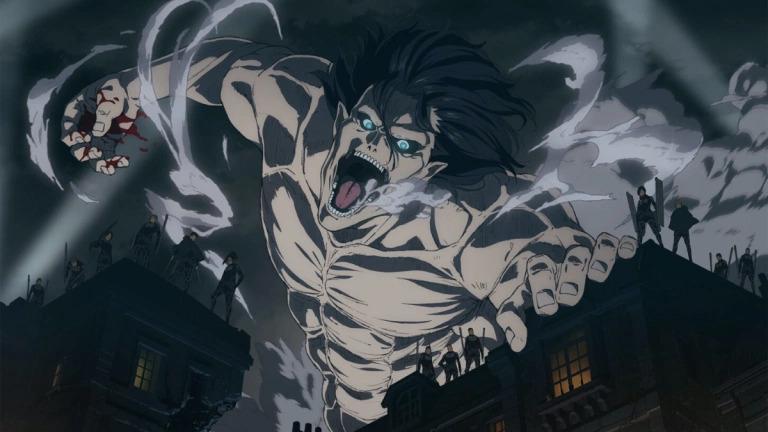
A still image from the Attack on Titan anime.
Warning: Spoilers for Attack on Titan manga and potentially anime
Last March, one of the most popular manga series in the world, Attack on Titan, reached its conclusion. And, like most of the manga, the ending was controversial. Some praised it as a fitting end to the manga, while others saw it as rushed and poorly written.
For the uninitiated, Attack on Titan is a manga (Japanese comic) series written and illustrated by Hajime Isayama. It follows the story of Eren Yeager, a human living in a world where humanity lives in three ginormous walls that protect them from a race of man-eating humanoids, known as Titans. Eren has vowed to rid the world of Titans after his mother was killed by one when he was a child. Throughout the series, Eren joins the military and he, along with his friends and fellow soldiers, tries to drive back the titans from the walls and learn the truth about them.
The big mystery of the show, of course, is the Titans. Of the titans, 9 of them are intelligent and can shift between human and titan form. Eren himself can shift into a Titan known as the “Attack Titan”. These “Titan-Shifters” are essential to the plot as it is they who are the movers and shakers of the setting. For example, the Colossal Titan was the one who broke down the first wall, leading to Titans invading Eren’s hometown of Shiganshina and slaughtering its residents.
Eventually, it is revealed that all titans are former humans, altered and twisted by a chemical serum. This race of humans, known as “Subjects of Ymir”, are feared around the world for their ability to turn into titans, and therefore are treated like scum and were only kept around for their ability, which the country of Marley uses effectively in war. The Subjects were sent to internment zones, with the biggest one being the island of Paradis (aka the Walls aka Eldia). From this point onwards, the story takes up a new angle that it’s been building towards. In a dramatic turn of events, our former hero, Eren, becomes the main antagonist. To protect his home of Eldia, he decides to commit genocide on a massive scale, summoning gigantic titans to destroy every other human being on the planet. Only through the combined efforts of his former allies and enemies, he is defeated.
So, it seems like a solid story, right? So why is it so controversial? Well, first of all, the ending can be viewed as dissatisfactory from multiple angles. Some people say that the ending rips off of Code Geass. Others are comparing it to Game of Thrones, which was notorious for its ending completely flopping onto the pavement. The fact of the matter is, the conclusion was at best, mediocre compared to the rest of the manga. Or, at least that’s what people are saying.
Despite Eren’s rantings of freedom, he still was bound to the predestined route of genocide.
There are some valid criticisms, no doubt. For example:
- Ymir, the first Titan Shifter whose spirit helps Eren with his plan, continues to give her subjects the ability to become Titans despite it causing them pain and suffering over the course of hundreds of years… because she was in love with her abusive husband, who ordered her to keep on giving the powers?
- Eren’s plan of genocide only managed to delay people from attacking Paradis further, forcing Eldia to adopt a militaristic/fascist ideology in order to protect themselves from further retaliation.
- Eren was somehow forgiven by his comrades for his plan of genocide?
- Eren at the last possible minute became the “hero” again.
- Eren could’ve just used the Founding Titan to remove the Titan ability from the Subjects of Ymir in the first place, preventing the need for genoicde.
- And last, but not least: Despite Eren’s rantings of freedom, he still was bound to the predestined route of genocide.
So is this redeemable? Well, certain types of media age like fine wine. Take, for example, Spiderman 3, specifically the infamous dance scene. When that came out, people were… less than impressed with it. And who could blame them? When watching that scene, people felt uncomfortable and weirded out by the awkwardness of the whole thing. Looking back on it now, however, one can see that that was the point. At that point in the movie, Peter was wearing the Venom Symbiote, which causes his entire personality to change. His idea of self-confidence, which was completely unrealistic, causes us to cringe. The point of the change was to show how even Peter was corruptible. He, of course, eventually realizes this and discards the symbiote.
There are two points we can take away from this. One, the subtext behind this was obvious in hindsight, once we watch the movie again. No matter how long it takes, the story will look better once we fully absorb everything that happens, maybe read it again once or twice. And two: this was a planned thing. This was there from the beginning. And these two points can be applied to Attack on Titan as well.
Obviously, Isayama is not some sort of genius and had his story planned out in minute detail from the beginning. That is something that not even the strongest of writers can manage. However, the general storyline and plot was something that was decided on in the first few months of the manga’s production. And if we look at the story again throughout the entire manga, we can see one thing.
Attack on Titan is not a tale of freedom. It is a tale of fatalism, of fate.
This seems odd and contradictory, considering the entire story seems to be about freedom at first glance. The Scouts are fighting for their freedom. The Warriors (Marley’s Titan Shifter soldiers) are fighting for freedom and security for their families. etc. etc. However, if we look closely, we can see the elements of fatalism running deep. From the outset, the Survey Corps are explicitly told they’ll probably end up as titan fodder. The Titans are a certainty. The Titans are always there. This generates fear, and horror.
To counteract this fear, the people of Paradis had to keep on going, keep getting their hopes up. They wish for freedom, but they can’t have it, so they turn to an alternative. As Kenny Ackernman says in chapter 69, “Everyone had to be drunk on something to keep pushing on … Everyone was a slave to something.” The people within the Walls had to keep on going, keep on pushing for that one spark of hope. That hope manifests later on in the form of Eren Yeager, who wields the Attack Titan, the very symbol of Eldia’s hope. But even that is predetermined by fate as well. In chapter 121, Eren reveals that he used his Attack Titan’s ability of Future Memory Inheritance to influence his father into giving him the Attack Titan and Founding Titan. So from the very beginning, the events of the series were predetermined, set in stone. Eren was fated to inherit the Attack Titan, and was fated to commit genocide.
Let’s look at this from a different perspective: the Nordic one. It’s no surprise that Attack on Titan draws a lot from Norse Mythos with names like Ymir and the Titans being directly linked to the Giants. But there’s a lot more to this. In a thesis written by u/Bandwarrior on reddit , he points out the different mythological aspects of Attack on Titan. Norse Mythology focuses a lot on the concept of fate, with Odin always trying to avoid his fate, and of course, the ever approaching threat of Ragnarok, the apocalyptic battle that will end all creation as we know it. Lookie here, we see that we have an apocalyptic battle in the final chapter as well.
Bandwarrior explains that the different members of the cast of Attack on Titan are parallels to different Norse Gods. Erwin Smith, leader of the Survey Corps before his untimely demise, is Tyr, the one handed god of Justice (Erwin also has one hand, in case you were wondering). Levi Ackermaan is Thor, slayer of Giants and protector of Humanity. Hanji, or Hange, is Odin, one eyed god of War and Wisdom. So who is Eren?
Because he’s confused. Eren is a slave to destiny. He represents us as humans, always fighting for that spark of hope. His one freedom is to try and fulfill his destiny to create a better future. I believe the moral of this story is: freedom is a lie, and in chasing it, we become slaves to the fate that envelops all of us.
He is Surtr, the Bringer of Ragnarok.
Surtr is destined to cross the Bifrost and strike the first blow against Midgard. He barely pays attention to the beauty of the Bifrost, only focused on the enemies ahead of him. Now, who does that sound like? Eren crossed the ocean, not caring for its beauty (as seen in Chapter 90, where he thinks to himself that freedom will not come unless everyone in Marley is dead). Surtr has been waiting his whole life for his destiny, his revenge.
And Eren’s destiny too, is to bring carnage and destruction. That is simply what was foretold by his future memories, and he decided to follow that path. Why? Because he’s confused. Eren is a slave to destiny. He represents us as humans, always fighting for that spark of hope. His one freedom is to try and fulfill his destiny to create a better future. I believe the moral of this story is: freedom is a lie, and in chasing it, we become slaves to the fate that envelops all of us.
Is this a really pessimistic ending? Very much so. But I think that’s the point. The author tells us that we as human beings are bound to fate, and the only freedom we’ll ever get is to accept that and move on.
Related Stories
Death of an industry: how the mcu and dceu killed comics.
Look, up in the sky! It’s a bird—it’s a plane! Nope, it’s just another billboard advertising a Marvel movie. Comic book films are curren...
In comic books, shock value has lost all value
The art of storytelling is difficult to master. The skill to devising a plot. The ability to develop characters. The constant game of cat-and-mouse be...
Bay Area presents "Harmony:" a boundary-breaking comic book
Tracy’s Annual Become One Voice Comic Show brought more than just fun costumes and cool gadgets; there, Harmony was introduced — a new comic book ...
- arts and entertainment
- issue 9: 2020-2021
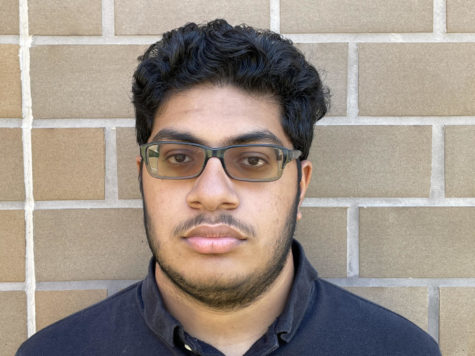
Aki was in the newspaper club in 7th and 8th grade, then went into Journalism in high school. He stayed on the Tribune because he loved the environment and loved working with others, as well as putting out...
Bay Area presents “Harmony:” a boundary-breaking comic book
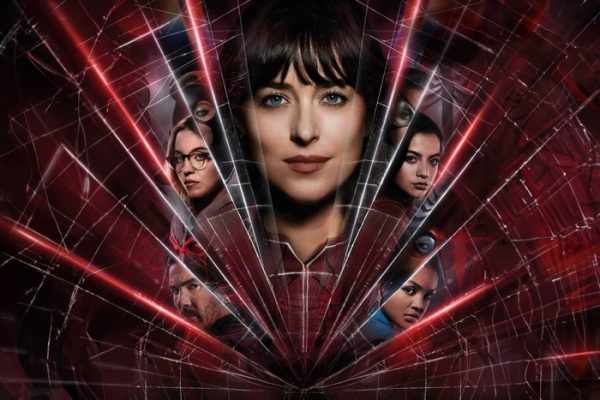
‘Madame Web’ fails to web-up Sony’s disastrous Spider-Man franchise
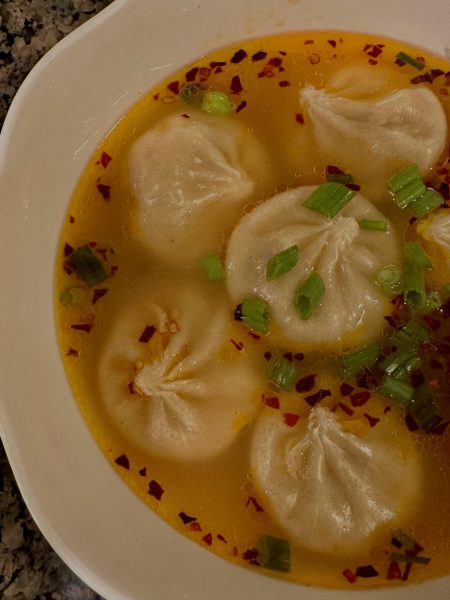
5 frozen Trader Joe’s foods that will melt your soul
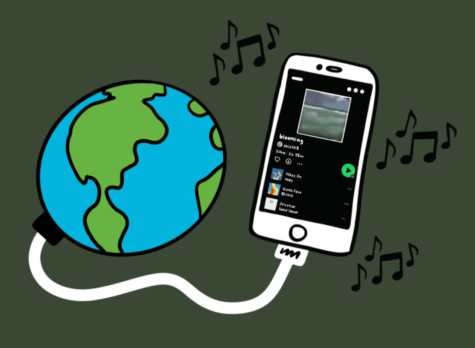
Crate digging: Stages of love

Tate McRae’s ‘Think Later’ is a bold take on the uncertainty of love and youth

Hit replay on the past: the resurgence of vinyls revolutionize music in the digital age

Snapshots of senior year: 18 to-dos
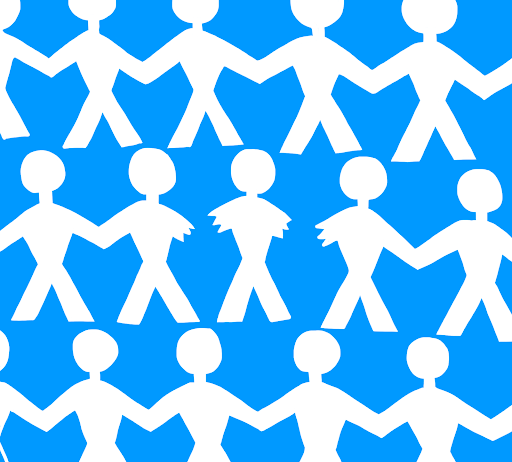
The idea of losing relationships needs to scare us
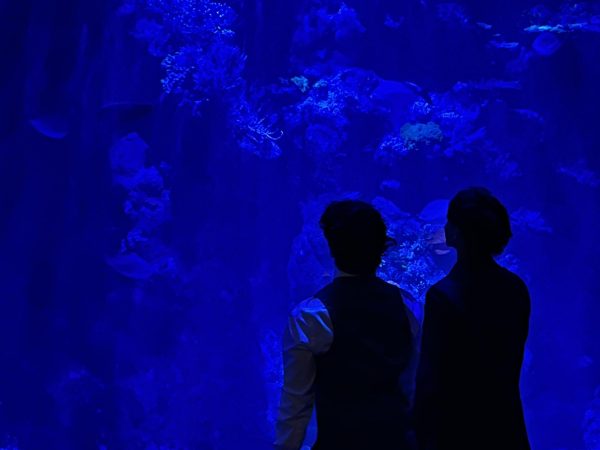
2024 Prom: A Night to Remember

The DVHS Robotics team prepares for the VEX Robotics World Championship
Wacky Bathroom Passes at Dougherty Valley
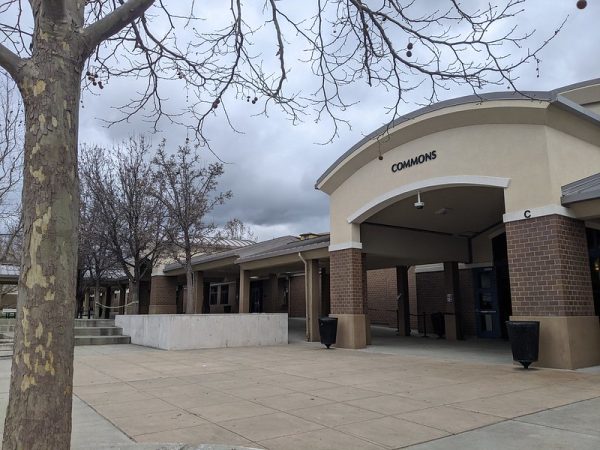
DVHS Senior Rohan Reddy establishes new Academic Leadership study group centering around SAT preparation
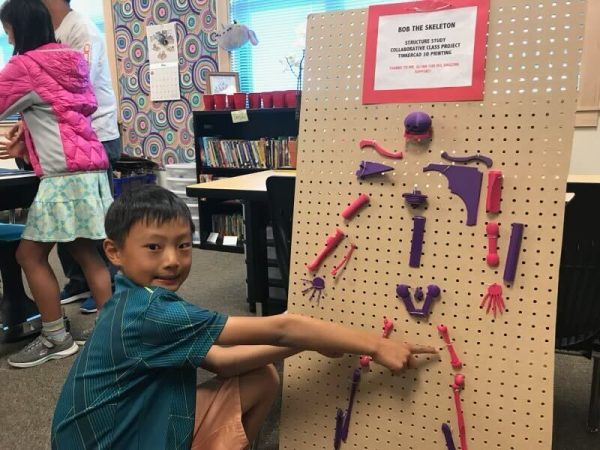
ATP: Academic Boon or Stressful Curse

DVHS introduces new course: women’s literature
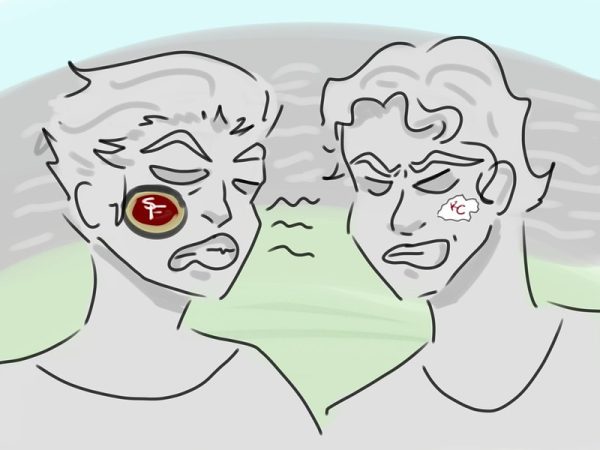
Are Football fans the best or worst sports fan group?
The official student news site of Dougherty Valley High School.
Comments (1)
Cancel reply
You must be logged in to post a comment.
Anonymous • Jul 20, 2021 at 2:39 pm
Thank you. Honestly I look back at what we’ve got and what we could’ve got, and I don’t know if I’m gonna cry or laugh! What happened to the person who created all those epic moments and why did all of those deaths and sacrifices reduce to yMiR WaS iN lOvE with HeR AbUsEr?!!! It’s sad. It’s so damn sad…
- Awards & Recognition
- COVID-19 Coverage
- Entertainment and Media
- News Updates
- Our Policies
- School Life

- Film & History: An Interdisciplinary Journal
Revisiting the Fascist Subtext of Attack on Titan : Some Notes on a Modern Reactionary Anime
- Tim Brinkhof
- Center for the Study of Film and History
- Volume 51, Number 2, Winter 2021
- 10.1353/flm.2021.0005
- View Citation
Additional Information
Project MUSE Mission
Project MUSE promotes the creation and dissemination of essential humanities and social science resources through collaboration with libraries, publishers, and scholars worldwide. Forged from a partnership between a university press and a library, Project MUSE is a trusted part of the academic and scholarly community it serves.

2715 North Charles Street Baltimore, Maryland, USA 21218
+1 (410) 516-6989 [email protected]
©2024 Project MUSE. Produced by Johns Hopkins University Press in collaboration with The Sheridan Libraries.
Now and Always, The Trusted Content Your Research Requires

Built on the Johns Hopkins University Campus
This website uses cookies to ensure you get the best experience on our website. Without cookies your experience may not be seamless.

The Wings Of Freedom
- View history
This article is about the first chapter of the Attack on Titan: No Regrets manga. For other uses of this name, see Die Flügel der Freiheit (Disambiguation) .
- 3 Characters in order of appearance
- 4 Navigation
After Levi , Isabel , and Furlan escape from the thugs, they are persecuted by members of the Military. Levi guesses that they are part of the Survey Corps because they are far more skillful than the Military Police. Levi and his friends try to evade them by splitting them up, but his friends are finally trapped by two soldiers and Levi by Erwin Smith and Mike Zacharias . There Erwin makes a deal: if they join the Survey Corps, they will not be judged by the Military Police. Without any other choice, Levi accepts the deal.
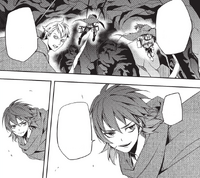
Isabel, Furlan and Levi notice their pursuers
Levi , Furlan Church , and Isabel Magnolia are pursued by the Survey Corps in year 844, all of them utilizing vertical maneuvering equipment. The three delinquents skillfully maneuver their way through the Underground District , but the Survey Corps members are not so easily eluded.
Refusing to be caught, the three choose to split up, but, despite some complicated navigating by Levi, he is tracked down by Erwin Smith and Mike Zacharias and the three engage in a brief brawl. During the struggle, Erwin manages to cut one of Levi's cables, preventing him from fleeing. Levi attempts to resist capture but stands down upon seeing that Furlan and Isabel have already been apprehended.
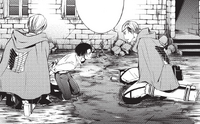
Erwin blackmails Levi
With Levi and his allies restrained, Erwin questions them on where they obtained their vertical equipment, and how they became so skilled at using it. Levi remains defiantly silent, but after Mike roughly interrogates him, Isabel and Furlan reveal that they taught themselves. Impressed by Levi's ability and willpower, Erwin proposes a deal with him: if Levi were to join the Survey Corps, Erwin will not turn him and his companions over to the Military Police . Seeing that he is in no position to refuse, Levi accepts.
Characters in order of appearance
- Isabel Magnolia
- Furlan Church
- Mike Zacharias
- Erwin Smith
- Attack on Titan
- 1 Eren Yeager
- 2 Nine Titans
- 3 Levi Ackerman
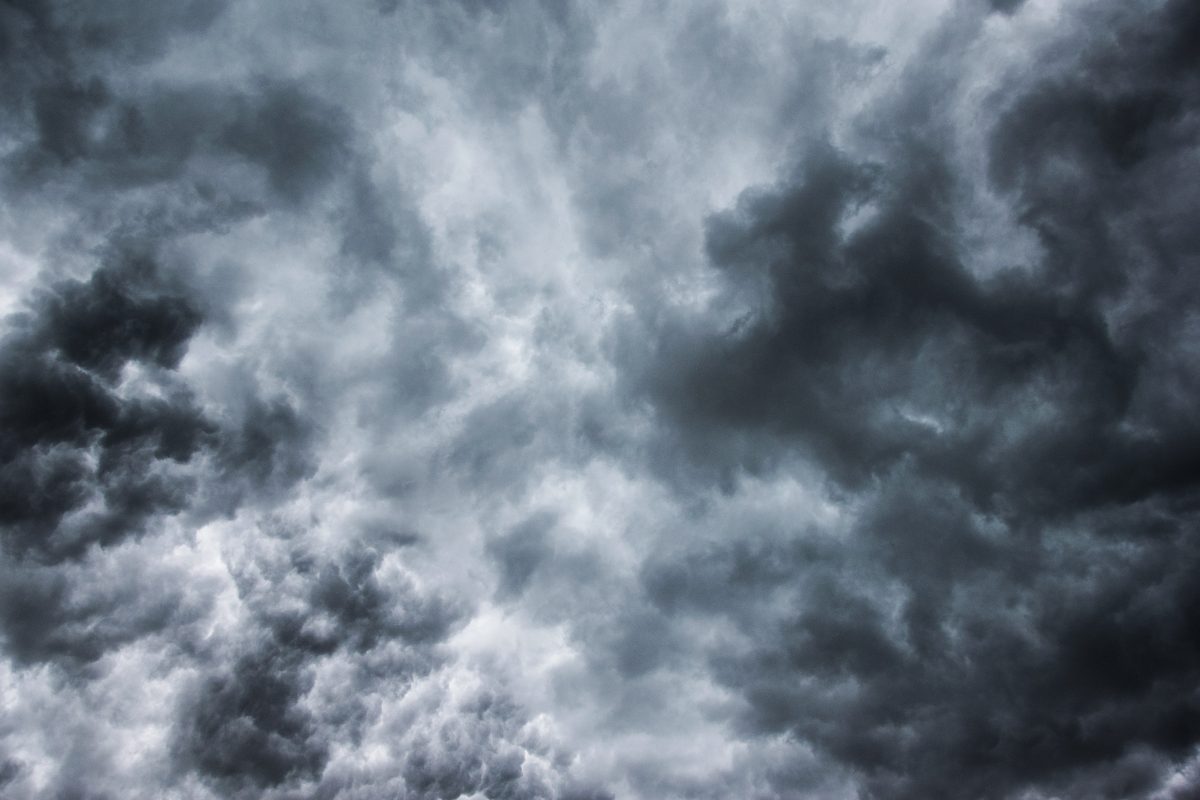
Photo by Michał Mancewicz on Unsplash .
How “Attack on Titan” Complicates the Genocide Convention
There has been recent traction towards the idea that pop culture is relevant to the “ study, practice, and teaching of international law ”. Many scholars acknowledge that it is important to engage with science fiction, even with its ‘fantastical hypotheticals’, as its grim scenarios can allow the re-imagination of law as it stands, and make international law accessible to non-lawyers. Similarly, since popular culture reflects and can impact common perspectives of international law, its narratives have immense pedagogical potential for unpacking international legal concepts.
This piece is written in the same spirit, aiming to bring to the forefront an old controversy around the definition of the crime of genocide by referring to one of the most popular anime in current times: Attack on Titan . In the ongoing final season, the show has witnessed a phenomenon virtually unheard of in anime tropes — the apparent transformation of a hopeful protagonist into a chilling villain. It is such that most viewers (and characters in the manga) would describe his actions as a ‘genocide’ of unprecedented proportions (see here , here , here and here ). As is often the case, the situation would not fall within the legal definition of genocide. Yet as is far from often the case, his actions are perhaps much more shocking than genocide.
“On the Other Side of the Sea…is the Enemy”
Some context is necessary about the show and our protagonist, Eren Yeager. The show is set in a fantastical world with humans living in a secluded place called Paradis Island . What is unique about this setting is the presence of dangerous giant creatures called ‘Titans’ that roam Paradis. Owing to Titans, Eren and others are forced to live behind the safety of consecutively enclosed walls. His arcs centre around his yearning for ‘freedom’ from this cattle-like life behind the walls.
During the show, we learn that Paradis islanders are not the only humans in the world. They are, in fact, descendants of the ‘Eldian’ race and kingdom, who are feared for their supernatural ability to transform into Titans. This includes Eren, who is eventually revealed as the beholder of the Founding Titan – one that can control and command all other Titans.
The show follows the journey of Eren and his Paradis comrades in slowly unravelling their lost history. To summarise briefly, they discover that their centuries-long enemy, the Kingdom of Marley, was responsible for their secluded life behind the walls. In fact, the whole world fears Eldians given their supernatural abilities and seeks their elimination. Learning this, many of the once hopeful characters are in despair.
So how does the show connect to the prohibition of genocide? Once Eren manages to activate the full powers of his Founding Titan, he can control all Titans at will — and he chooses to unleash the ‘Rumbling’. Eren releases countless colossal Titans to march and trample over the entire world, except for Paradis Island. Seeking to exterminate a world that bears hatred against Eldians, his aim is to end all life apart from that of Eldians living in Paradis (his motivations for this campaign are complex, and in debate ). A cold and chilling sight follows for anyone watching.
“The Wall Titans Will Trample Every Inch…Beyond This Island…”
Suppose this fantastical hypothetical happened in our world. Article II of the Genocide Convention, 1948 defines genocide, among other things, as the killing of all members of “a national, ethnical, racial or religious group”. Such killing though must have been intended at destroying the group itself “in whole or in part”. This is the requirement of dolus specialis , in that there must have been the specific intention to eliminate a particular group (partially or entirely). Marley and the world’s attempts to eliminate Paradis Eldians should plainly count as an attempted genocide, whether we identify Eldians as a ‘race’ or ‘national’ group or both .
The same cannot be said though, of Eren’s plan to eliminate the world at large, except for Paradis Eldians. This is because Article II of the Convention requires the accused to target a group that can be identified with ‘positive characteristics’. A ‘negative’ formulation of groups falls short of the dolus specialis test. As the International Court of Justice (ICJ) put it in Bosnian Genocide case, genocide “is a matter of who [the targeted] people are, not who they are not ” (para. 193). Fairly enough, this does seem linked to the textual framing of the Article, which notes that one’s intention should be to destroy the group ‘as such’. The requirement of positive identification is confirmed by the preparatory works of the convention, with most delegates citing Raphael Lemkin’s original coining of the word ‘genocide’ with reference to the Holocaust — arguing that the crime should acknowledge the harm ensuing to humanity given the loss of specific groups and their ‘contributions’ ( p. 152-154 ).
But there has been a minority that pushed for the ‘negative’ approach. Long before the formation of the International Criminal Tribunal for the Former Yugoslavia (ICTY), the Security Council had constituted a commission of experts to determine the laws relevant to the situation. This commission argued that the convention would be a “weak or even useless instrument” if it did not acknowledge the harm caused to “all the target groups as a larger whole” – by this logic, the larger whole would comprise all non-Eldians , including Marleyans and all other races and nationals of the world. When the ICTY and its counterpart for Rwanda were formed, both tribunals however held against this reasoning. There was the exception of the ICTY Trial Chamber decision in Jelisić (1999) that chose to favour ‘negative’ formulations, yet this ruling was overruled. Most recently, the International Criminal Court has also rejected the possibility of a negative formulation of groups protected against genocide. In short, it seems settled that genocide could only occur against positively identified groups, unlike Eren’s plan.
One could attempt to argue, in theory, that multiple parallel genocides against different groups may be considered to occur in such events. However, one would have to meet the stringent evidentiary onus of proving a special intention to destroy each affected group for its particular group characteristics. This would be distinct from Eren’s intention to take measures having the effect of destroying many groups at once for lacking certain characteristics (i.e., a negative formulation of groups) – which seems to be the case at hand. The difficulty in proving specific intention to eliminate different groups is precisely the intent of the positive grouping requirement.
“I Never Wanted to Grab a Knife; I Swear…”
This is not to say that Eren-like campaigns would enjoy impunity in our world. The ‘Rumbling’ would certainly amount to a widespread and systematic attack against civilian populations, in the sense of crimes against humanity . There would also be a host of war crimes for which the ‘Rumbling’ would attract responsibility. The question, however, remains perplexing if thinking of the ‘fair labelling principle’, as per which each criminal harm must be articulated in line with its specific moral and legally appropriate enormity . If something should count as genocide, it would be unjust not to label it as such. Just as important is the fact that genocide does not only cover events of world-cataclysmic scale such as the ‘Rumbling’. The killings in the town of Srebrenica for instance, were limited in scale, but still recognised as a genocide by the ICJ in the Bosnian Genocide case (paras. 296-297). In other words, the genocide prohibition could be attracted if an Eren Yeager in any city or municipality decided to kill all non-Eldians or the like, if not for the positive identification requirement.
Scholars like William Schabas would find no qualms with this requirement, since these acts are covered within other crimes, and given their desire to keep invocations of genocide limited to exceptional situations. We therefore propose that this assumption is worth questioning, considering that millions of viewers seem to agree that Eren’s actions are a ‘genocide’ against humanity itself. This shows potential limitations in confining the definition of genocide to Raphael Lemkin’s original conception, which focused on harms to parts of humanity (i.e., loss of particular groups), as discussed earlier. The departure of the popular cultural perceptions of what amounts to genocide from its legal definition is not an unprecedented reality , but it ought to at least be acknowledged considering the moral and political weight attached to ‘genocide’. We leave the question open which among the many characterisations of Eren’s ‘Rumbling’ is valid while noting that perhaps even the gravity of the word ‘genocide’ may not be enough to describe it.
The Genocide Convention was drafted in response to very specific political conditions and contexts, seemingly in part to acknowledge the moral indignation caused to some of the particular groups targeted by Nazi forces. The Attack on Titan world is, of course, distant from our world, detached from international law as we know it, and perhaps does not even have states as we know them. And a campaign like Eren’s is unlikely to happen any time soon. But fiction of this nature still serves, as this post shows, great pedagogical potential for unravelling fundamental assumptions behind legal norms and offering hypotheticals to trigger the re-imagination of the law for those who may wish to. After all, as Hoffmann’s research shows ( p. 67 ), the crime of genocide — despite its jus cogens status — continues to be defined with many variations in the domestic legislation of states with different interests, histories, and moral demands. Thus, how we legally understand genocide today is a product of many unique circumstances, and whether we wish to strengthen that definition or to challenge it, Attack on Titan offers a viable site for presenting debates on that count.
Final remark: This post contains spoilers for crucial plot-points of the anime ‘Attack on Titan’. The authors do not intend to open a new debate, but rather revive an old one by using an anime as a framing device. Their intention is to show that international law can be debated in unconventional spaces. All arguments are purely hypothetical in nature.
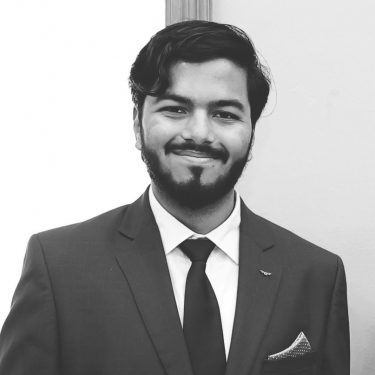
Abhijeet Shrivastava is a B.A., LL.B. (Hons.) graduate from Jindal Global Law School.
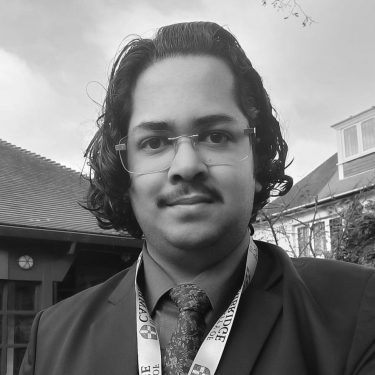
Anujay Shrivastava is an LLM candidate at the University of Cambridge, studying modules on international human rights law.
It is a great piece! I have one question though, did not Nazis persecuted people of many different groups exactly because there were not of ‘Aryan’ race? not the whole world indeed, but there is also signs of negative formulation of the group there.
Yes, that’s true, which is why it is perhaps regrettable that negative grouping did not receive affirmation in the Convention. There were also other similar – what I understand to be political compromises in the final negotiated draft – like the exclusion of sexuality, disability, political affiliations, or other analogous grounds from the legal definition of genocidal intent. This was even though Nazi forces did systematically target persons for these additional factors, aside from the general racial undertone of their campaigns. People often criticise the Convention for being backwards-looking (i.e., being drafted in a way to respond to the shock of the preceding decade), but in truth, it does not seem to have discharged even that role fully. Though I’m not sure how far others would agree with that. Thank you so much for sharing your thoughts and for reading!
Leave a Reply Cancel reply
Email By continuing, you accept the privacy policy

IMAGES
VIDEO
COMMENTS
Doomed to desire freedom, Eren sees in the Other an eternal threat to his existence. The feeling of living inside a cage, like a confined bird, or worse, like cattle conformed to waiting for slaughter, is a scary metaphor. Between the conformity of a passive and fearful life and the rebellion and confrontation of that threat, the feeling of ...
The Freedom to Explore. One of the central aspects of freedom in Attack on Titan is the freedom to explore. The world of the series is confined to the walls that protect humanity from the Titans, and for many characters, this is a suffocating existence. Eren, in particular, longs to see what lies beyond the walls and to explore the world outside.
All discourses by Eren Yeager in the Attack on Titan manga series were extracted and only discourses related to freedom were selected. The collected data were analyzed using four discursive ...
Attack on Titan deals with many themes over time, but there is one that affects the entire series: Freedom. I wrote this essay to examine how the obstacles to freedom changed over the seasons, and, alongside them, the cost to overcome them. No less important are the people willing to pay that cost.. SEASON 1
Benjamin Constant also tangled with this question in his essay "The Liberty of Ancients Compared with that of Moderns." Addressing the Royal Athenaeum of Paris in 1819, he was much more concerned with liberalizing the newly restored French monarchy than he was with Attack on Titan's carnivorous giants and genocidal foreign coalitions.
One of the primary themes of Attack on Titan is existentialism, a philosophy that emphasizes the individual's freedom and responsibility in creating their own meaning in life. The show depicts a ...
A subreddit dedicated to the manga Shingeki no Kyojin/Attack on Titan by Hajime Isayama, its anime adaptation and various spin-offs. ... My class just assigned an argumentative essay for our final, but I figured I would make mine fun to write by using the themes of Attack on Titan as my basis. Throughout the series, it's argued that humanity ...
Freedom - An Attack on Titan Essay. Posted by lashk99 January 29, 2021 February 2, 2021 Posted in Analysis, Essay. WARNING : Contains major spoilers for seasons 1,2 and 3 of Attack on Titan. Freedom. What does it truly mean to be free? In 2013 the critically acclaimed anime Attack on Titan released and took the world by storm.
The story of Kenny is both a tragic tale and a heroic one. As a great warrior, Kenny once slayed hundreds of soldiers for the sake of power. Mercilessly slaying these soldiers, Kenny eventually encountered Yuri, king of the walls. In this moment, on the brink of defeat, Kenny was shown mercy from Yuri, who apologized for his (ancestors ...
All the intricate twists in Attack on Titan seamlessly coalesce when viewed through this thematic lens. The narrative depicted in Attack on Titan does not revolve around the theme of freedom; instead, it intricately unfolds as a deep exploration of fatalism and the inevitable direction of fate. Within its narrative framework, the overarching ...
The Warriors (Marley's Titan Shifter soldiers) are fighting for freedom and security for their families. etc. etc. However, if we look closely, we can see the elements of fatalism running deep. From the outset, the Survey Corps are explicitly told they'll probably end up as titan fodder. The Titans are a certainty.
Attack on Titan is an ongoing Japanese comic book series written and illustrated by Hajime Isayama, who, growing up in the countryside of Ōita Prefecture, Japan, 2 landed upon a simple but disturbing truth: Because all living organisms must feed on other living organisms to survive, the world is an inherently cruel place. Life, by definition, undermines ethical considerations.
Attack on Titan has many different themes in its show. Among them, none is more important than Freedom. It is at the very core of the series, giving Eren Yea...
The Transformative Protagonist — A retrospective look at Eren Yeager. Attack on Titan (aka Shingeki no Kyojin) first became a pop culture phenomenon in 2013 when its anime adaptation aired. But it wasn't until recently that it established itself as one of the most celebrated works in anime history.
Essay 28 april 2021 attack on titan giant humanoid creatures roam the earth and lust for only one thing: human flesh. this is the setting of the world of attack. Skip to document. ... and he decides to use that ability to become humanity's beacon of hope for freedom. However, it is later revealed that Eren is not the only titan shifter; there ...
Which is exactly why the stories like AoT and a few others really connect with me on a deeper level. The thematic relevance of AoT and its nuanced perspectives on morality, freedom, racism etc really makes it special and comparable with some of the best stories ever IMO. 24. PrasantGrg.
This article is about the first chapter of the Attack on Titan: No Regrets manga. For other uses of this name, see Die Flügel der Freiheit (Disambiguation). The Wings Of Freedom (自由の翼 Jiyū no Tsubasa?) is the 1st chapter of the 1st volume and the 1st chapter overall of the Attack on Titan: No Regrets manga, written by Gun Snark and illustrated by Hikaru Suruga. After Levi, Isabel ...
"Attack on Titan'' is a gorey dark fantasy series following a decade in the young life of Eren Jaeger, a boy living on the outskirts of a walled, repressive society known as Paradis Island, whose inhabitants believe themselves to be the last of humanity. After losing his mother at the age of 10 during a surprise invasion by mindless ...
Thus, how we legally understand genocide today is a product of many unique circumstances, and whether we wish to strengthen that definition or to challenge it, Attack on Titan offers a viable site for presenting debates on that count. Final remark: This post contains spoilers for crucial plot-points of the anime 'Attack on Titan'.
Attack on Titan's True Freedom | Video Essay [SPOILERS] 529K subscribers in the attackontitan community. A subreddit dedicated to Attack on Titan (進撃の巨人) manga and anime series.
They argue that Attack on Titan represents a significant case of non- normative and counter- hegemonic representation in a typically heteronormative genre of Shounen, which is often noted to be toxic and exclusive to both women and queer folks alike. • "Discursive Construction of Freedom in Attack on Titan" (Fei Wong, 2022)
Attack On Titan ISP. If a man desires nothing sinful, he will suffer nothing painful; because sinful desires are insatiable and uncontrollable. Once human moralities are swallowed by evil, they sadly become "slaves" of sinful desires, by brainlessly doing some unconscionable things that they should not do. Nowadays, those desires exist in ...
A subreddit dedicated to Attack on Titan (進撃の巨人) manga and anime series. MembersOnline. •. Littlebookwitch. I wrote an 50 page Attack on Titan essay for school and got 100%. Discussion/Question. My teacher loved it so much that she wants to use it as an example for next year. Archived post.